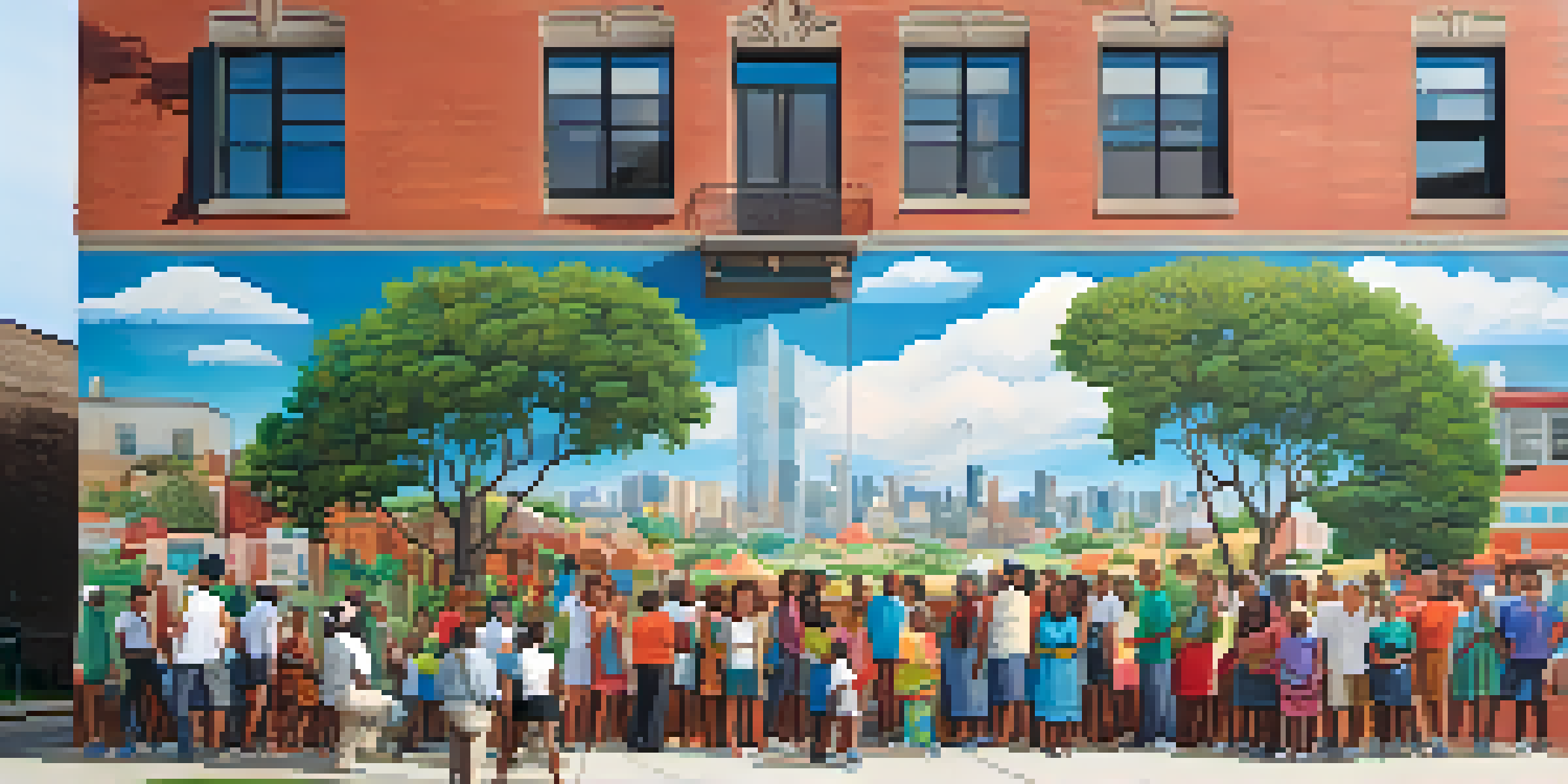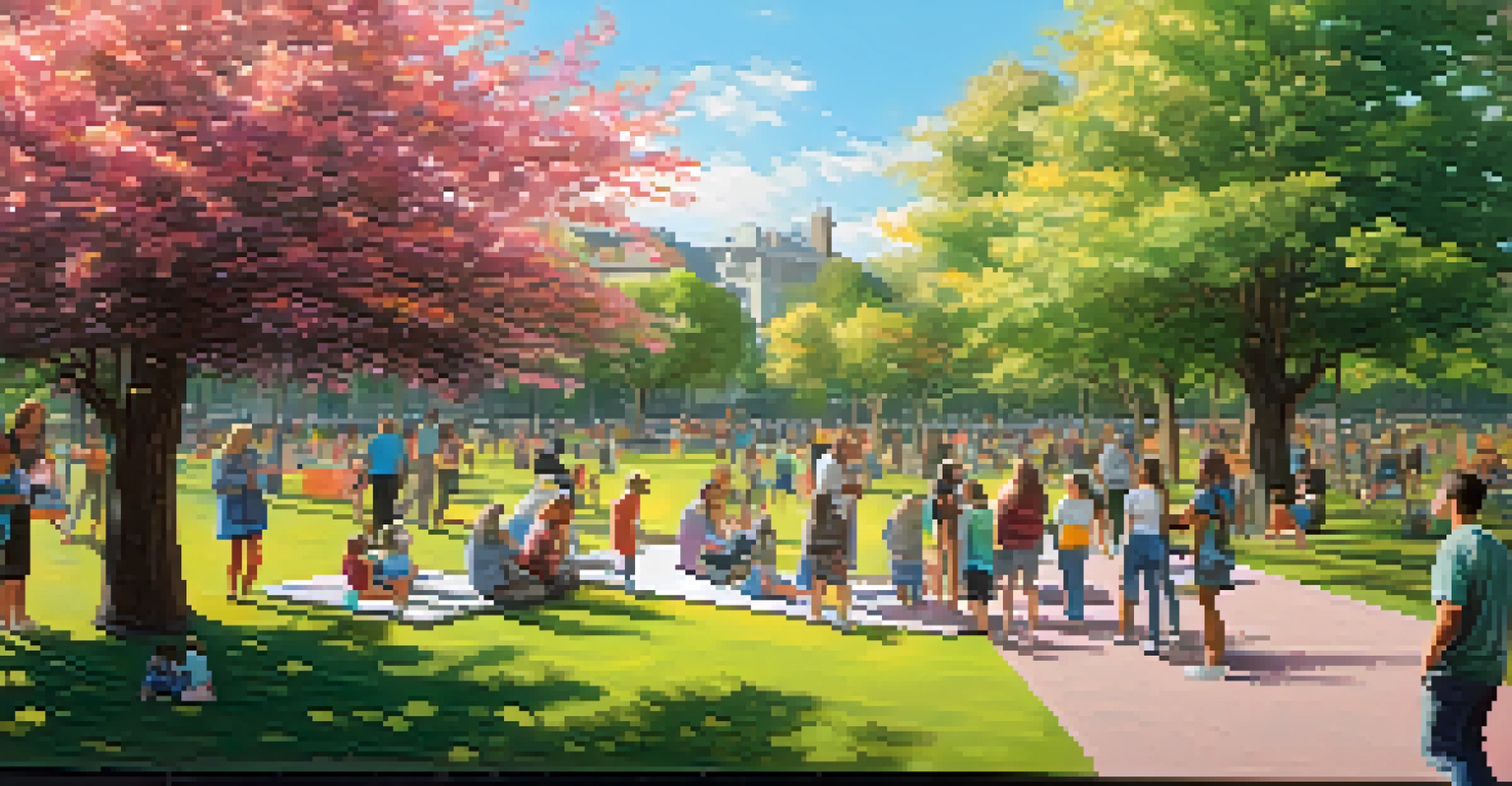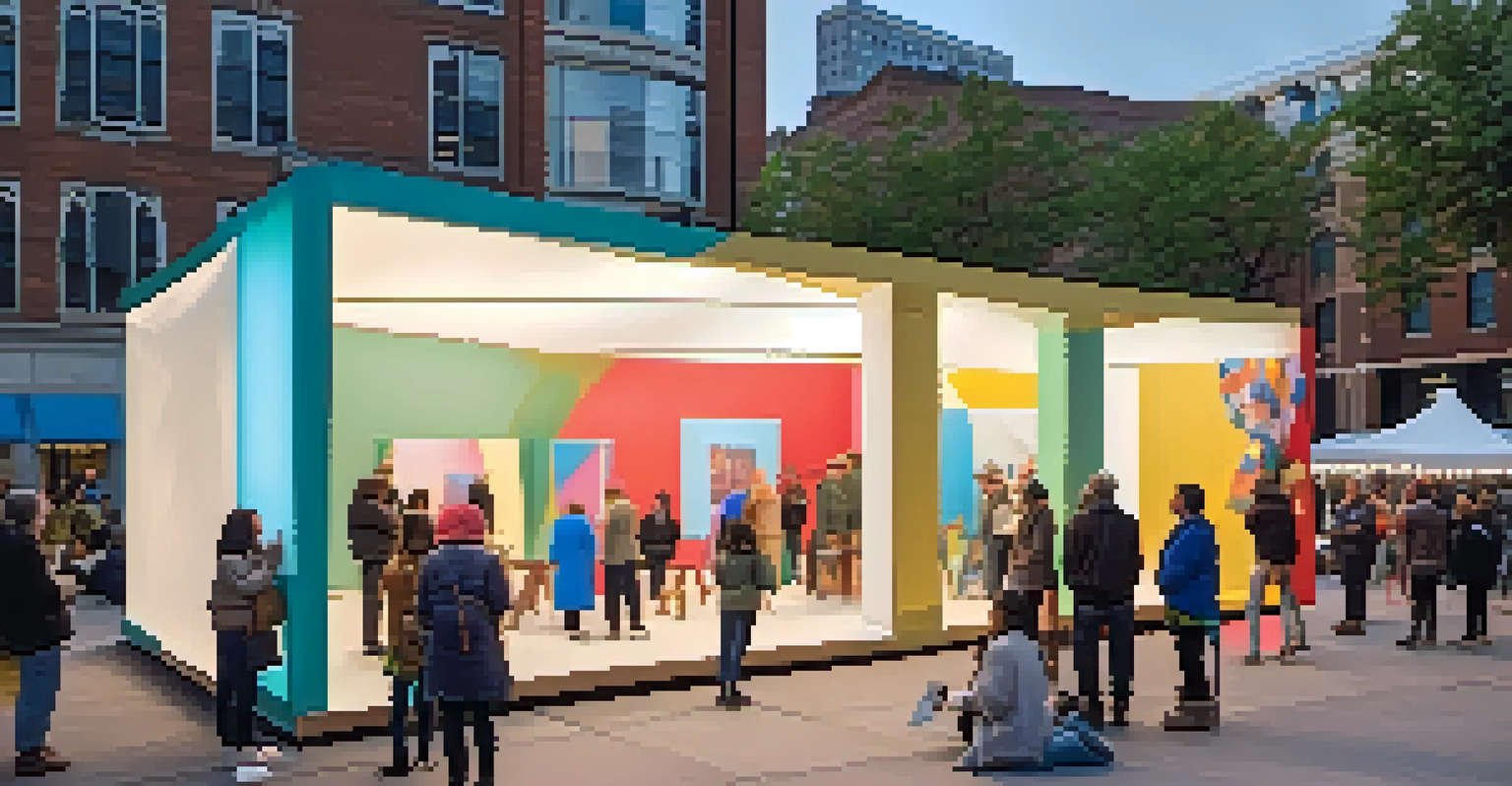Art in Public Spaces: Engaging Communities in Social Dialogue

The Role of Public Art in Community Identity
Public art often reflects the unique identity of a community, acting as a visual narrative of its history and values. Murals or sculptures can tell stories that resonate with local residents, providing a sense of pride and belonging. For instance, a mural featuring local heroes can inspire younger generations to connect with their community’s past and aspirations.
Art is the most beautiful of all lies; it is the greatest truth of them all.
Moreover, public art can serve as a landmark, creating a recognizable space where community members gather. These art installations often become meeting points, encouraging social interaction and collaboration among residents. When people identify with their surroundings through art, it fosters a deeper emotional connection to their neighborhood.
Related Resource
In this way, public art does more than beautify a space; it becomes a catalyst for community engagement. By involving local artists and residents in the creation process, the art reflects collective dreams and challenges. As a result, public art can unite diverse voices, enhancing the community's overall identity.
Art as a Medium for Social Dialogue
Art in public spaces can serve as a powerful conversation starter about social issues. Works that tackle themes like diversity, inequality, or environmental concerns invite viewers to reflect on their realities and engage in discussions. For example, an installation addressing climate change can prompt community forums where residents share their views and solutions.

Furthermore, the accessibility of public art allows for broader participation in these dialogues. Unlike a gallery, where entry might feel exclusive, public spaces invite everyone to interact with the artwork and the ideas it represents. This open accessibility ensures that voices from all walks of life can contribute to the conversation.
Public Art Shapes Community Identity
Public art reflects a community's unique identity, fostering pride and connection among residents.
Through art, communities can explore complex topics in a non-threatening way, making it easier for individuals to express their opinions. By creating a safe space for dialogue, public art can help bridge gaps between differing perspectives, fostering understanding and empathy among community members.
Engaging Diverse Communities Through Collaboration
Collaboration is key when creating public art that resonates with diverse communities. Involving local residents, artists, and organizations ensures that the artwork reflects the community's varied backgrounds and experiences. This participatory approach also helps to build trust and investment in the project, as people feel a sense of ownership over the art.
Public art is an act of community. It is a way for people to express who they are and what they stand for.
For instance, a community mural project might invite input from residents of different ages, ethnicities, and backgrounds. The resulting artwork not only embodies collective creativity but also highlights the richness of the community’s diversity. Such collaboration can break down barriers and encourage dialogue among groups that may not typically interact.
Related Resource
Ultimately, collaborative public art projects can strengthen community bonds, leading to a more inclusive environment. When individuals see their stories and experiences represented, it fosters pride and encourages ongoing engagement. This sense of belonging can transform a neighborhood, making it a more vibrant place for all.
The Impact of Temporary Public Art Installations
Temporary public art installations can create excitement and urgency within communities. These fleeting works often draw attention and invite immediate engagement, allowing residents to experience art in dynamic ways. For example, a pop-up art installation in a park might encourage families to gather, sparking conversations and connections.
Moreover, temporary installations can provide artists with the freedom to experiment and innovate. Without the weight of permanence, artists can respond to current events or community needs, creating relevant and meaningful dialogue. This flexibility allows for fresh perspectives and ideas to emerge in public spaces.
Art Promotes Social Dialogue
Public art serves as a catalyst for discussions on social issues, inviting diverse voices to engage in meaningful conversations.
As a result, temporary art can significantly impact community engagement. The limited-time nature of these projects often encourages people to take part in events, discussions, or activities surrounding the artwork, leading to a burst of community interaction that can have lasting effects.
Challenges in Public Art Implementation
While public art offers numerous benefits, there are challenges in its implementation. Securing funding can be a significant hurdle, as grants and sponsorships are often competitive. Communities may need to get creative in finding resources, whether through crowdfunding or partnerships with local businesses.
Additionally, navigating the approval process for public art can be complex. Local governments may have regulations and guidelines that can slow down projects, leading to frustration among artists and community members. Engaging with city officials early in the process can help smooth these challenges and ensure that community voices are heard.
Related Resource
Lastly, there can be differing opinions on what constitutes 'good' public art. Balancing artistic expression with community preferences requires open dialogue and compromise. By fostering conversations around these differing viewpoints, communities can arrive at solutions that honor both the artist's vision and the residents' desires.
Case Studies: Successful Public Art Projects
Looking at successful public art projects can offer insights into effective community engagement. For example, the 'Chicago Mural Movement' involved local artists creating murals that reflect the city's diverse cultures. These vibrant artworks not only beautified neighborhoods but also sparked conversations about identity and history.
Another noteworthy example is the 'Before I Die' project, which encourages passersby to write their aspirations on blackboards installed in public spaces. This interactive art piece invites reflection and dialogue about dreams and community goals, creating connections among participants. The simplicity of the project fosters deep engagement and emotional sharing.
Collaboration Strengthens Community Bonds
Engaging local residents and artists in public art projects fosters a sense of ownership and inclusivity within the community.
Such case studies highlight the potential of public art to engage communities meaningfully. By examining what worked in these projects, other communities can draw inspiration and tailor their public art initiatives to foster dialogue and connection.
The Future of Public Art and Community Engagement
The future of public art is bright, with opportunities for even deeper community engagement. As technology evolves, artists can explore new mediums, such as augmented reality, to enhance the public art experience. These innovations can create interactive installations that invite participation and dialogue, making art more accessible and engaging.
Moreover, the growing emphasis on social justice and community empowerment is shaping the types of public art being created. Artists are increasingly using their platforms to address pressing societal issues, fostering discussions that resonate with diverse audiences. This trend suggests a future where public art continues to serve as a vital tool for social change.

Ultimately, the future of public art lies in its ability to adapt and respond to community needs. By prioritizing inclusivity and collaboration, public art can remain a powerful catalyst for connection and dialogue, ensuring that it continues to enrich communities in meaningful ways.